THE AMERICAN CHESTNUT PROJECT
Progress Report 2021
Moving Closer to 10,000 Trees
Activities undertaken between November 1, 2020 and November 30, 2021
This is an exciting year with the largest Darling American chestnut harvest to date. This will add to our current 5,165 total trees in our field trials, 2,018 of which are the Darling 58 American chestnut trees, and three generations of their offspring, that are being reviewed by the U.S. federal regulators for release to the public and forest restoration programs. Therefore, even with the continued challenges from the COVID-19 pandemic, that include supply chain delays and additional safety protocols, this has still been a very productive year thanks to your continued support of our research team. Although we have had many research accomplishments (see publication list at end of report as examples), to keep this year's report brief, we will highlight the tree diversification, production, and the regulatory progress.
Outcrossing pollinations and tissue culture - Hannah Pilkey (Production Manager)
This pollination season was an exceptional year for incorporating new mother trees and pollen types to promote genetic diversity in the transgenic breeding plan. Below is a bulleted summary:
- An abundance of pollen and a prolific flowering season allowed the ESF team to perform the most controlled pollinations to date. In total, 5,378 viable nuts were harvested! This is a significant increase over last year when 1,400 nuts harvested.
- Ninety-two mother trees from the Castanea genus were pollinated at permitted locations in New York, compared to forty-one last year. Sixty of these trees were American chestnut. Of the 60 pollinated American chestnuts, 27 were newly flowering trees, thus contributing to our diversification goals.
- Diversifying and production of Darling 58 was further achieved by our collaborators at TACF that performed pollinations in ME, VT, IN, PA, VA, SC, and GA. Some of the crosses were with TACF's backcross trees containing Phytophthora root rot (PRR) resistance to test if we can stack the blight tolerance and PRR resistance in the offspring.
- Ten different transgenic pollen types from diverse backgrounds were used to perform pollinations and produced predominantly T3 seeds. One of the pollen types produced in Maine by Dr. Tom Klak, D58+20USU45.5, was an early flowering T3 tree from last year. This pollen type produced 28 viable nuts to produce the first of the T4 generation. This accelerated pollen production was published in the fall issue of TACF's Chestnut magazine.
- Pollinations occurred mainly on pure American chestnut mother trees for the primary goal of restoration, but this year we had enough pollen to perform controlled pollinations on other Castanea species and interesting agricultural varieties including Allegheny chinquapin, Bouche de Betizac hybrid, Luvall's Monster hybrid, and Bill's Chinese hybrid, to name a few. These may help in future areas of agricultural American chestnut hybrid restoration, another value of the American chestnut trees.
- Nearly 200 nuts were produced from crosses between Ozark Chinquapin mother trees and Darling 58 pollen. These nuts will begin our plan to breed OxO into blight susceptible Ozark chinquapins and help restore this closely related species that was also devastated by the chestnut blight.
- The first practice pollinations kits using frozen wild-type chestnut pollen were sent out this year to a handful of citizen scientist volunteers. This was in anticipation of Darling 58 pollen shipment following deregulation. Every participant produced viable nuts and provided valuable feedback for future pollen shipments. To learn how to pollinate the American chestnut and how you can get involved, please watch our virtual pollination workshop here: American Chestnut Restoration Project - Pollination Workshop
- From the tissue culture lab, over 200 T2 trees were produced clonally, many of which went into holding plots for future distribution. In addition to many American chestnut trees, some of our first American/European hybrids were also propagated for field testing. European chestnut is also susceptible to blight and this is a first step to bringing the OxO gene into that species.
- Thirteen new, diverse genotypes from the 2020 controlled crosses were successfully initiated into tissue culture. Two of these cultures include the first T1s of the wound/pathogen inducible promoter lines that help target the expression of OxO to the infection sites. We hope that some of these cultures will become pollen parents for the 2022 pollination season
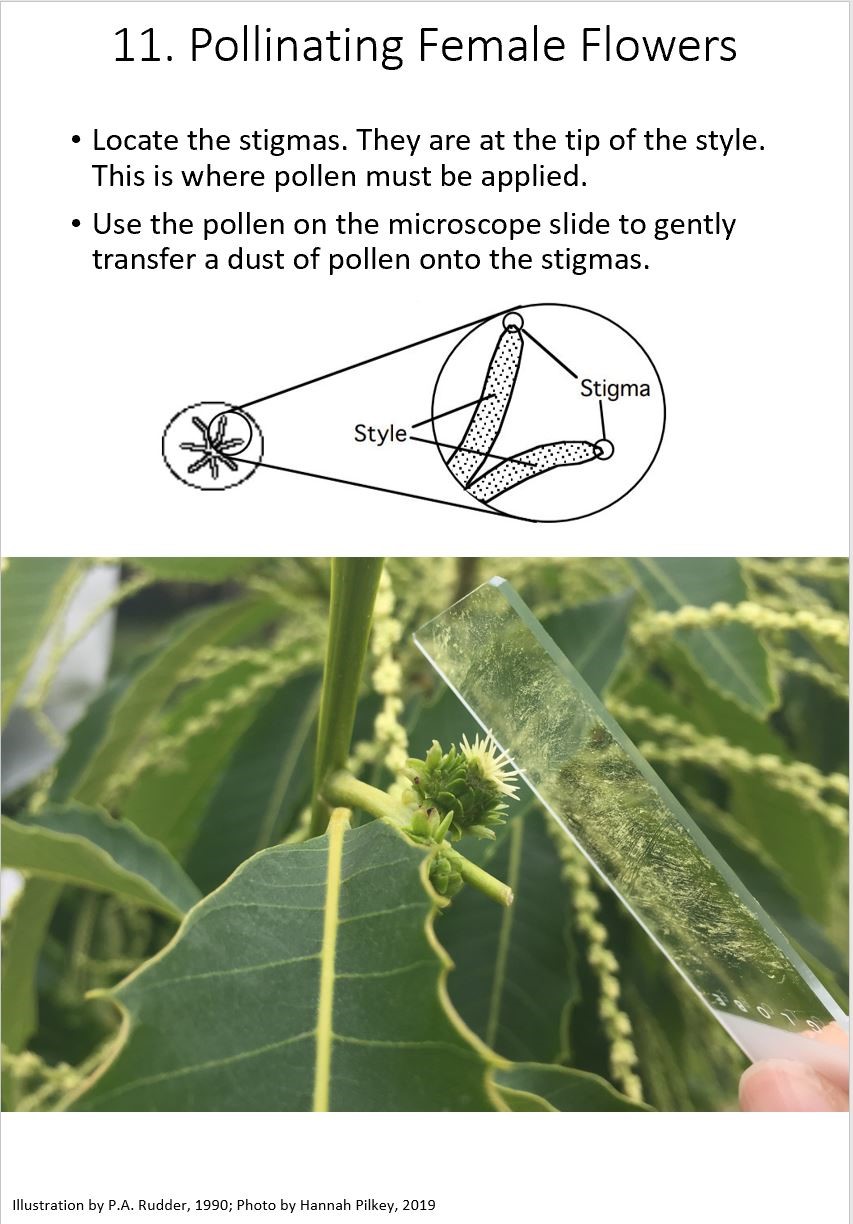 Figure 1. Hanna Pilkey's instructions on pollination.
Figure 1. Hanna Pilkey's instructions on pollination.
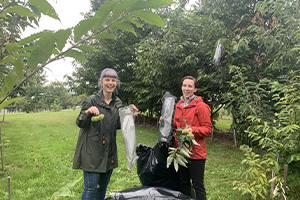
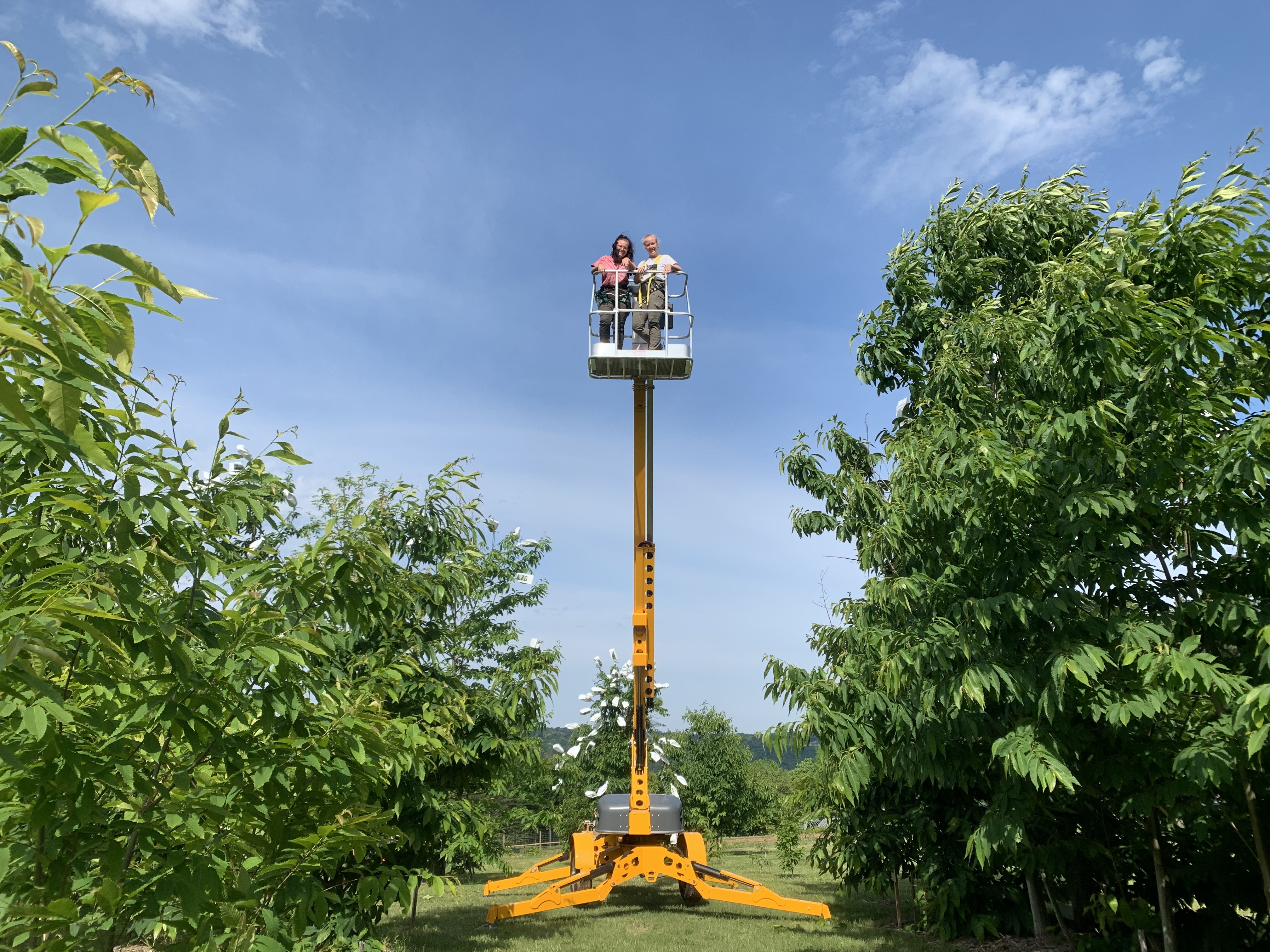
Figure 2. Left, Patricia Fernandes (Postdoc) and Kaitlin Breda (Admin assistant) harvesting. Right, Sarah Meisner and Kyra LoPiccolo (undergrad students) in the bucket lift bagging female flowers.
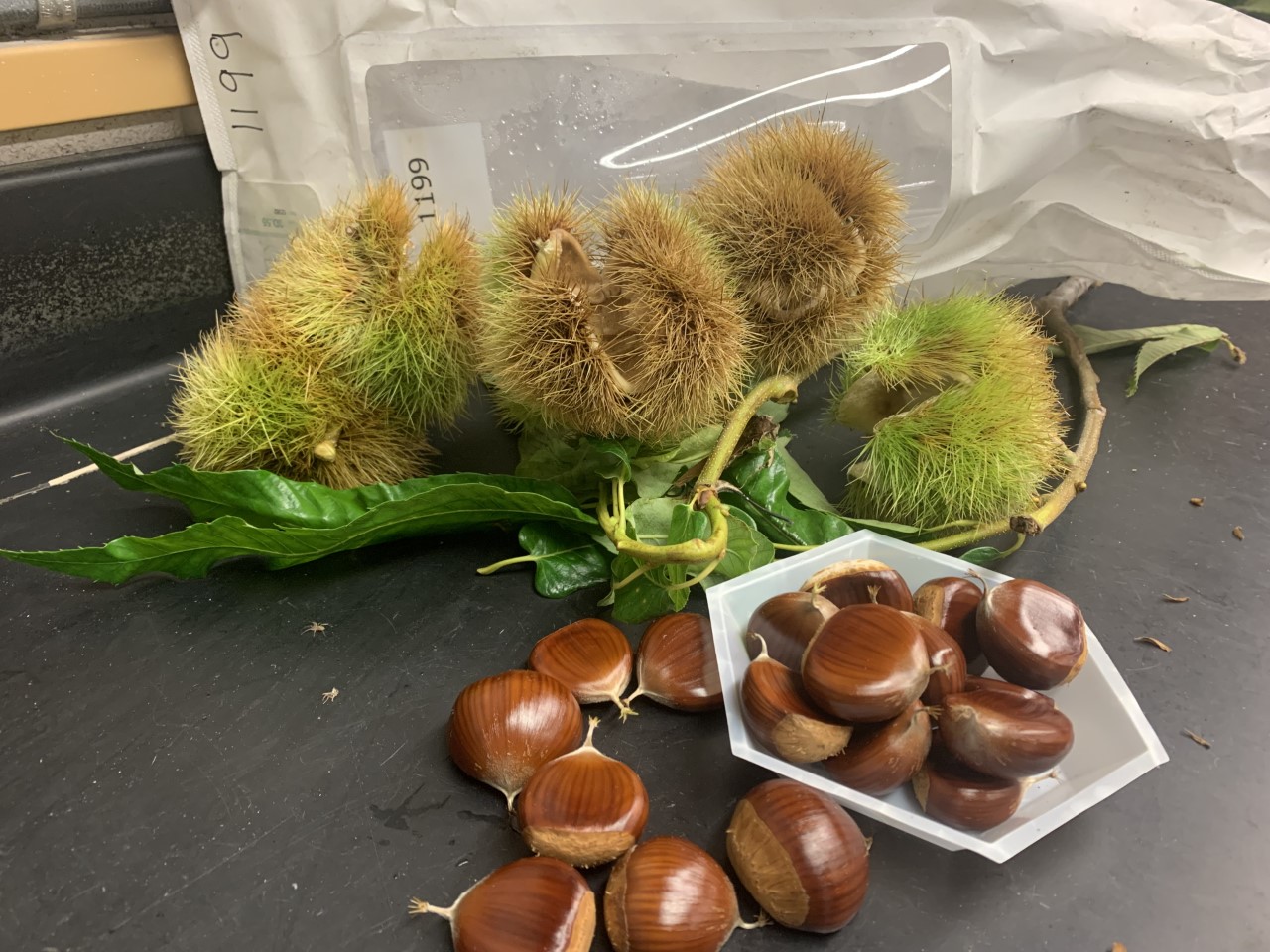
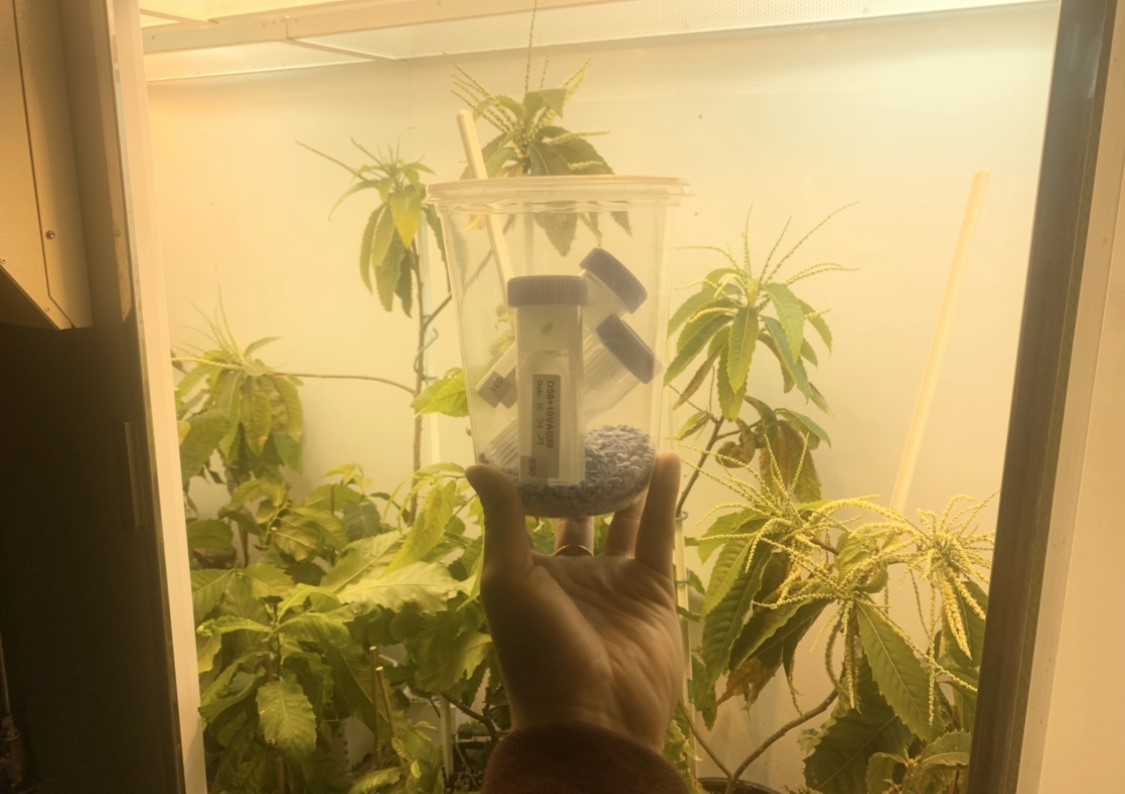
Figure 3. Left, American chestnut/Bouche de Betizac hybrid nuts as example of harvest. Right, High-light growth chambers rapid pollen production.
Regulatory Progress (Bill Powell, Professor and Chestnut Project Director)
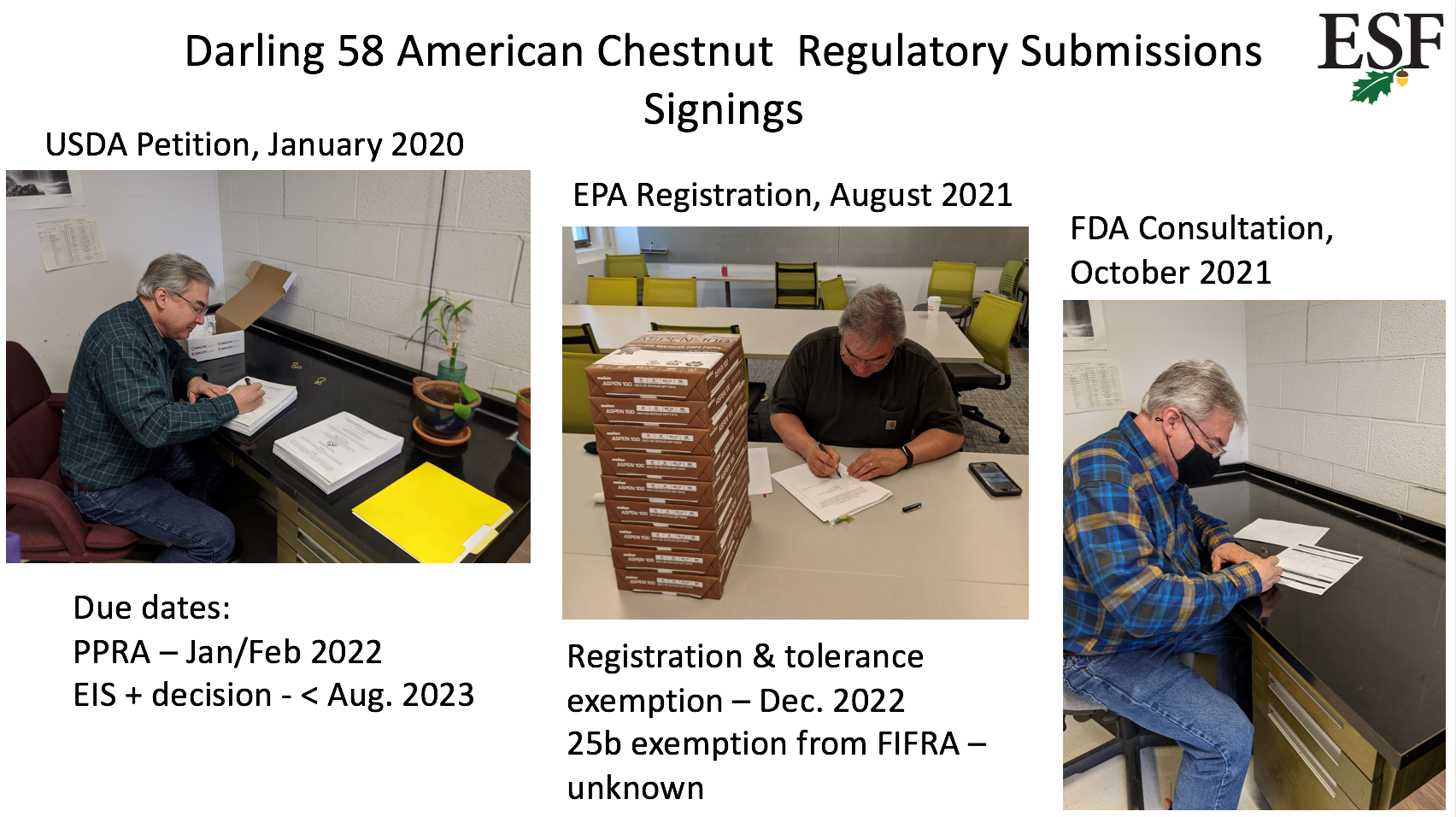
No matter how much research or production progress we make, everyone has the same question, when can we get some of the "Darling" American chestnut trees? This has been a difficult question to answer because we are working with three regulatory agencies in the U.S. (and soon two in Canada). In the past the regulators could only tell us the "typical" timelines for approval. Then they say, the American chestnut isn't typical. This will be the first restoration tree developed with the tools of biotechnology. But it won't be the last. The Darling American chestnut trees will pave the way to rescue many other threatened tree species such as the American elm and others. Therefore, the regulators are being extra careful and giving our trees extensive review. The Darling American chestnut trees will be one of the most studied variety of trees in history. By doing this, it will make it easier and faster for future restoration trees because the regulators will be much more familiar with the development of restoration trees.
The good news is we are finally getting decision dates in writing. The USDA petition was submitted on 1/17/2020 (just before COVID hit). We went through two public open comment periods and in the last announcement they wrote when they expect the Plant Pest Risk Assessment (PPRA) and Environmental Impact Statement (EIS) will be completed and decisions made, "We plan to complete the PPRA within 6 months, and the EIS and record of decision (ROD) within 2 years of the date of this notice. This schedule is tentative and subject to extension." So that would put the PPRA around February 2022 and the ROD around August 2023.
After completing additional EPA requested experiments, we have submitted a 19 volume (4,525 page) registration and exemption from tolerance application to the EPA on 9/28/21. This starts a mandatory clock for review and were told this would be completed by DEC. 2022. In parallel, we are submitting a petition for a 25b exemption from FIFRA following a process suggested by the EPA regulators. We expect to submit this petition next quarter which starts the parallel review process. The two reviews will have shared information, but independent results, and we can start distributing trees with just the registration, while waiting on the 25b exemption.
After many discussions with the FDA and completion of experiments they requested, we submitted our consultation document on 10/27/21. We expect this review process to take about a year. In addition, we are submitting a separate petition to be exempt from the wheat labeling rules for food since we only added a single gene which we will be submitting after a couple more experiments they requested.
So, all in all, we hope to have all the regulatory decisions needed for distribution to the public by the fall of 2023. Fingers crossed. My team and I appreciate our supporter's patience and encouragement to keep going through this long process. The trees are coming!
Publications this year
- Carlson, Erik, Kristen Stewart, Kathleen Baier, Linda McGuigan, Tobi Culpepper II, and William Powell. 2021. Pathogen-induced expression of a blight tolerance transgene in American chestnut. Molecular Plant Pathology. (in press)
- Klak, Thomas, Ellen Spiers, and William Powell. 2021. Transgenic Pollen in Less Than a Year. Chestnut Journal. Fall 2021issue.
- Newhouse, Andrew E., Anastasia E. Allwine, Allison D. Oakes, Dakota F. Matthews, Scott H.McArt, and William A. Powell. 2021. Bumble Bee (Bombus Impatiens) Survival, Pollen Usage, and Reproduction Are Not Affected by Oxalate Oxidase at Realistic Concentrations in American Chestnut (Castanea Dentata) Pollen. Transgenic Research: https://doi.org/10.1007/s11248-021-00263-w.
- Newhouse, A. and W. Powell (2021) "Intentional introgression of a blight tolerance transgene to rescue the remnant population of American chestnut" Conservation Science and Practice 3(4):e348. https://conbio.onlinelibrary.wiley.com/doi/full/10.1111/csp2.348
